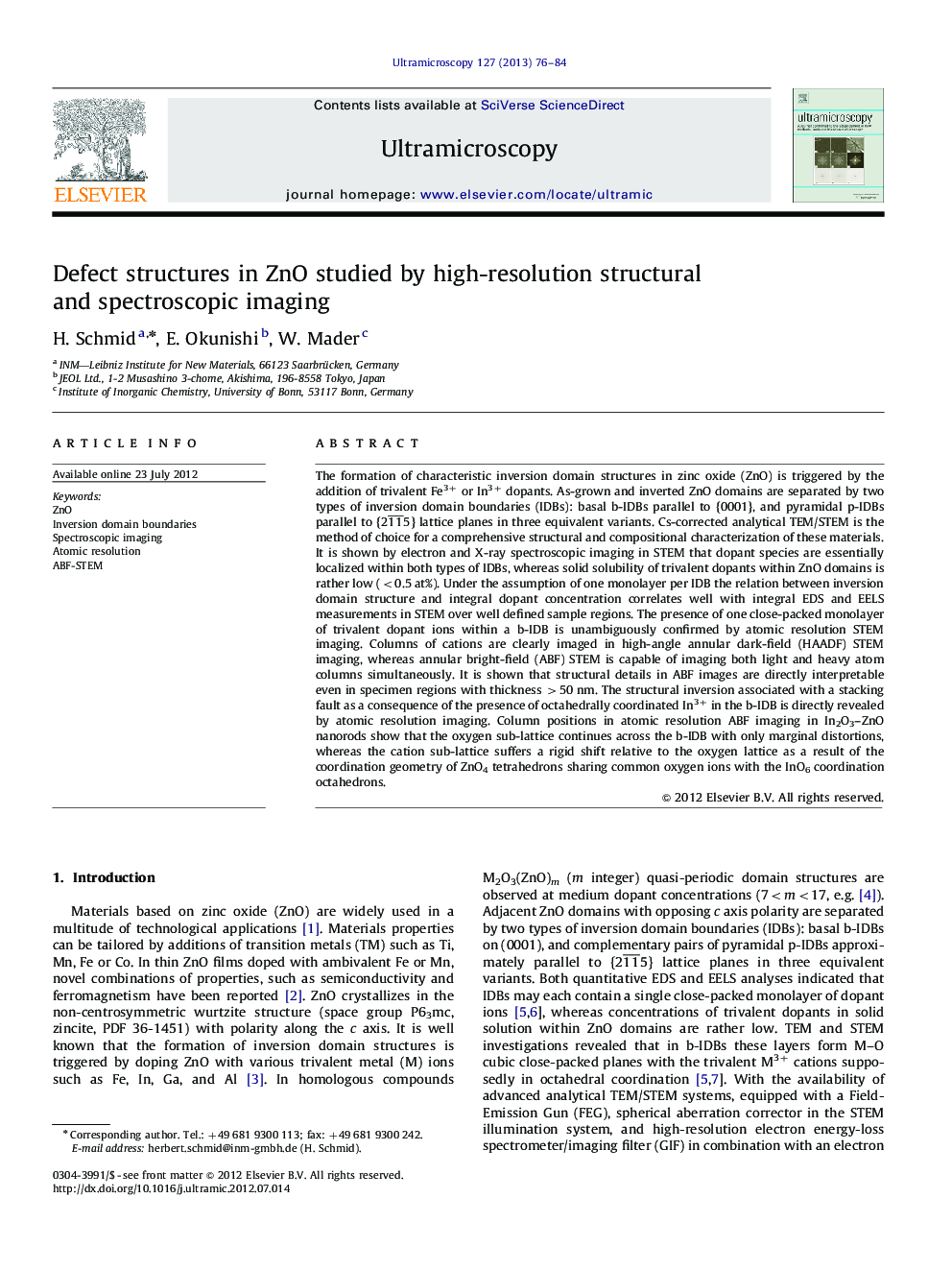| کد مقاله | کد نشریه | سال انتشار | مقاله انگلیسی | نسخه تمام متن |
|---|---|---|---|---|
| 1677484 | 1518351 | 2013 | 9 صفحه PDF | دانلود رایگان |

The formation of characteristic inversion domain structures in zinc oxide (ZnO) is triggered by the addition of trivalent Fe3+ or In3+ dopants. As-grown and inverted ZnO domains are separated by two types of inversion domain boundaries (IDBs): basal b-IDBs parallel to {0001}, and pyramidal p-IDBs parallel to {21¯1¯5} lattice planes in three equivalent variants. Cs-corrected analytical TEM/STEM is the method of choice for a comprehensive structural and compositional characterization of these materials. It is shown by electron and X-ray spectroscopic imaging in STEM that dopant species are essentially localized within both types of IDBs, whereas solid solubility of trivalent dopants within ZnO domains is rather low (<0.5 at%). Under the assumption of one monolayer per IDB the relation between inversion domain structure and integral dopant concentration correlates well with integral EDS and EELS measurements in STEM over well defined sample regions. The presence of one close-packed monolayer of trivalent dopant ions within a b-IDB is unambiguously confirmed by atomic resolution STEM imaging. Columns of cations are clearly imaged in high-angle annular dark-field (HAADF) STEM imaging, whereas annular bright-field (ABF) STEM is capable of imaging both light and heavy atom columns simultaneously. It is shown that structural details in ABF images are directly interpretable even in specimen regions with thickness >50 nm. The structural inversion associated with a stacking fault as a consequence of the presence of octahedrally coordinated In3+ in the b-IDB is directly revealed by atomic resolution imaging. Column positions in atomic resolution ABF imaging in In2O3–ZnO nanorods show that the oxygen sub-lattice continues across the b-IDB with only marginal distortions, whereas the cation sub-lattice suffers a rigid shift relative to the oxygen lattice as a result of the coordination geometry of ZnO4 tetrahedrons sharing common oxygen ions with the InO6 coordination octahedrons.
Journal: Ultramicroscopy - Volume 127, April 2013, Pages 76–84